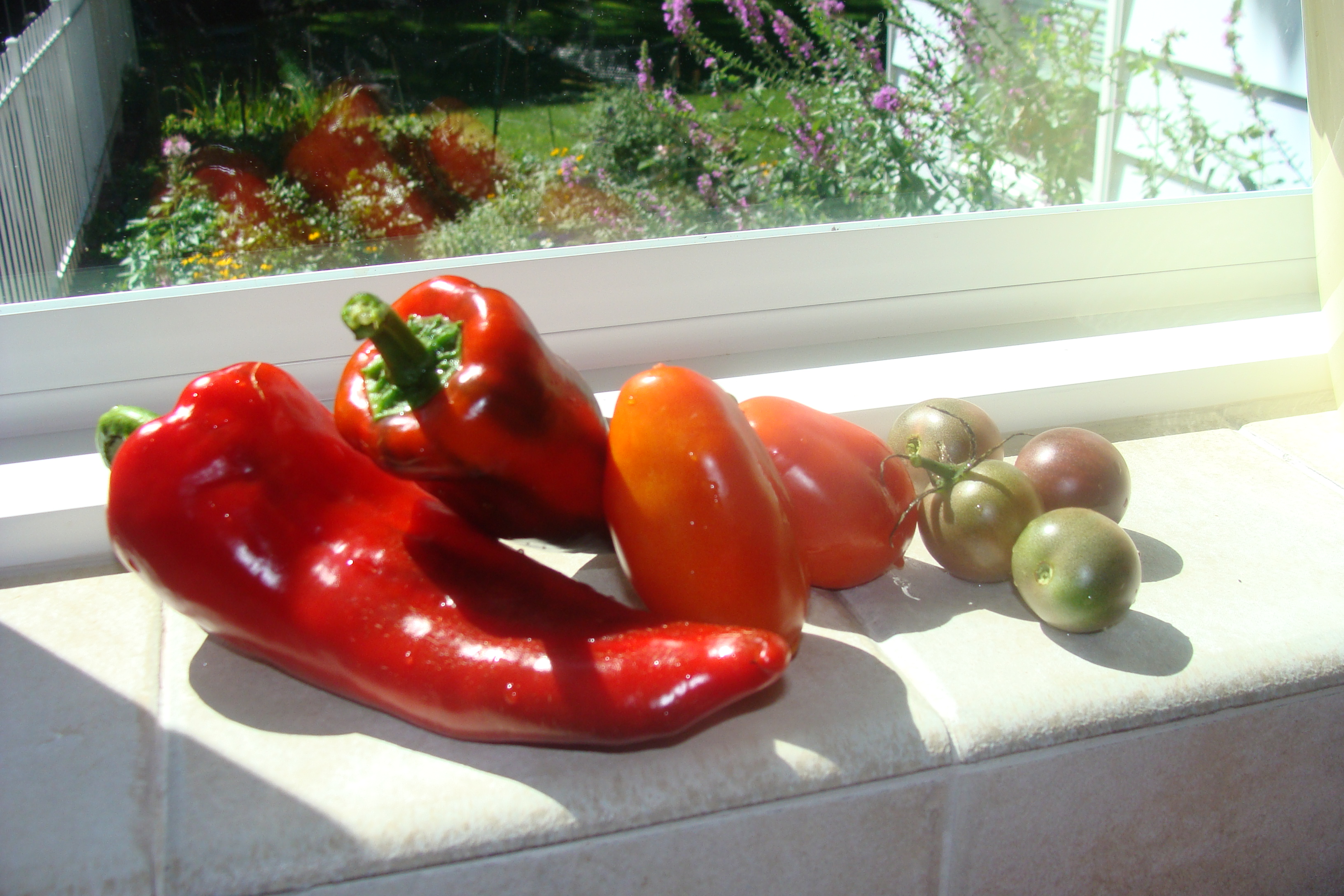
The family of enormously chubby ground hogs who live rent-free in my yard, found a way through the fence and into my garden a couple of weeks ago. They ate nearly everything. Only a few peppers, most herbs, the arugula (take note, they don't seem to like arugula) and a few tomatoes survived. If you understood how much work I put into my garden this year, you'd understand my mood. This made me blue. Like purplish blue. But whenever I get a blow to the spirit, a stint in the kitchen with simple, nurturing recipes makes me human again. Serving healthy comfort food to people I like, perks me up even more, especially if they enjoy it.
On The Tender Palate Facebook page, a few Tender Foodies recently asked, "I've never had quinoa! How do you make it?" So virtual friends, here is the first of a series of quinoa recipes.
This particular recipe is comforting in summer or winter, and the left overs can be turned into a quick, protein-rich breakfast, too (see below).
What is Quinoa?
Quinoa (say, "keen-wah") is a gluten-free, alkaline grain that is high in manganese, magnesium, copper, iron, phosporous, tryptophan and Riboflavin (Vitamin B2). Though considered a grain, it is really a seed related to leafy greens like spinach & swiss chard. It has a wonderful nutty flavor and is super tasty in savory & sweet dishes. It also has all 9 of the essential amino acids that we humans need, including lysine, which is important for tissue growth and repair. Those 9 amino acids make quinoa a complete protein and a fantastic meal. The Inca Indians called it warrior food, or "Inca Gold" for a reason.
Rinse & Cook the Quinoa Grain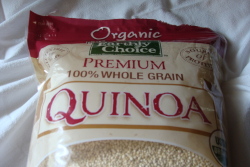
Rinse 1 cup of raw quinoa in a bowl, then drain using a fine sieve. Get all of the foam off. Unwashed, quinoa seeds have a bitter-tasting coating that protects it from being eaten by birds when it is growing in the field. This coating is called saponin and must be removed before it is cooked and eaten. Most modern quinoa is washed to a degree, so simple rinsing is thought to be adequate. (More on washing quinoa and its origins).
Toss into a pan with 2 cups of chicken broth* and bring the mixture to a boil. Reduce the heat, cover and simmer for about 15 minutes, or until a white ring forms around the outer edges of the grain. Set aside. This can be done a day or two ahead.
*Vegetarians can also use vegetable broth. If you use water, you may need to adjust the seasoning.
Ingredients
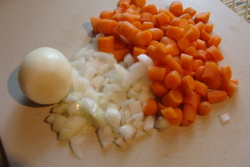
2 TBS of good, organic olive oil
2 cups cooked organic quinoa
1 cup chopped carrots
1 cup chopped yellow onion
Optional: 2 sweet organic peppers, sliced (purple, red, orange are best. Green peppers are a little too bitter when cooked for my taste)
1-1/2 tsp. sea salt
2 tsp. ground cumin
1/2 tsp. ground coriander
2 cloves of chopped garlic
Fresh snow peas, ends chopped off
1/2 cup organic chicken broth
1/2 cup chopped fresh basil
Prepare the Vegetables & Make the Hash
In a med/large- sized frying pan, heat the olive oil for a minute or so, then toss in the chopped onions and carrots. Cook on medium high heat for 10 minutes until the carrot is just tender and the onions are soft. Add the garlic, 2 tsp. of cumin, 1/2 tsp. coriander and 1 tsp. of sea salt and stir in well. Add the sliced peppers. Cook for another 10 minutes, stirring occasionally, until the onion is very tender and a little bit carmelized.
At this point, the pan will be a bit dry. Don't add oil. Just add the cooked quinoa and stir in. Let the quinoa sit on the stove for 1-2 minutes. If the quinoa starts to get brown, that is great, it will add flavor. Stir in the 1/2 cup of chicken broth, the remaining 1/2 tsp. of salt and the chopped snow peas. Cook for 2 more minutes. Then stir in the chopped basil and cook for 30 seconds or so - just enough time for the flavors to filter through the food. Taste, adjust and serve hot.
What Do I Do with the Left Overs?
Reheat the Hash with an Egg
If you have left over hash, put a touch of olive oil in a pan, heat it, add the leftover hash and crack an egg or two over it. Stir in the egg until it's cooked. It's really good as a hearty breakfast, or as a different, protein rich dinner on night two.
 Thursday, April 5, 2012 at 6:00PM
Thursday, April 5, 2012 at 6:00PM  jenny tagged
jenny tagged  Recipe,
Recipe,  black beans,
black beans,  protein,
protein,  pumpkin seeds,
pumpkin seeds,  quinoa,
quinoa,  vegan
vegan  Email Article
Email Article  1 Reference
1 Reference  Print Article in
Print Article in  Chef Tip,
Chef Tip,  Recipe
Recipe 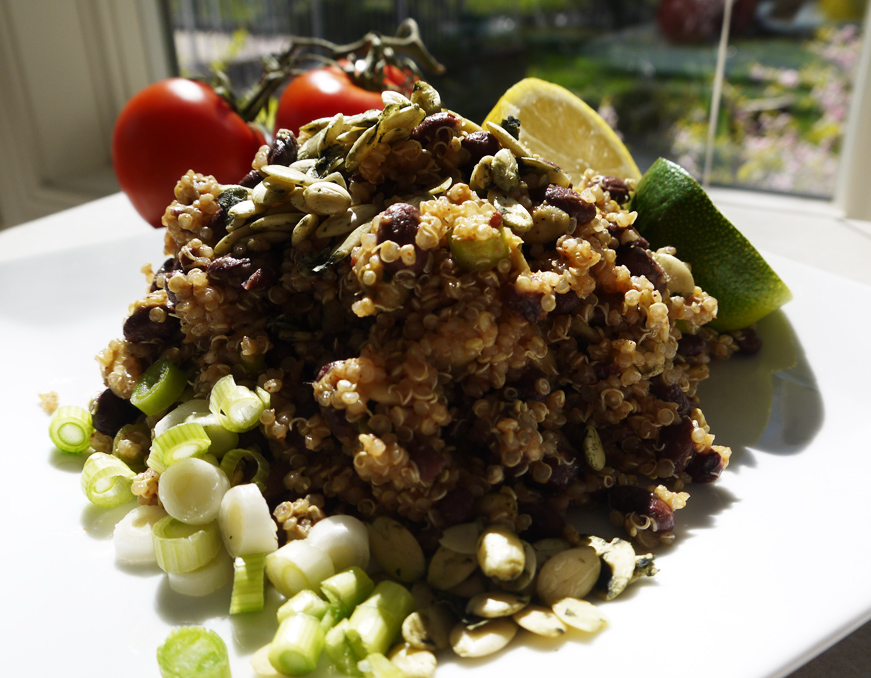
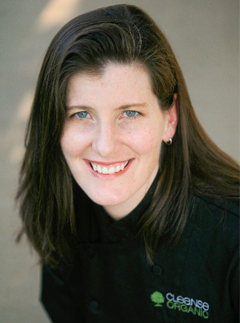 Jenny Brewer is a nutritionist and chef who teaches people how to cook healthy foods that taste delicious. Visit her site at www.jennybrewer.com for delicious healthy recipes, meal plans and cooking inspiration.
Jenny Brewer is a nutritionist and chef who teaches people how to cook healthy foods that taste delicious. Visit her site at www.jennybrewer.com for delicious healthy recipes, meal plans and cooking inspiration.
